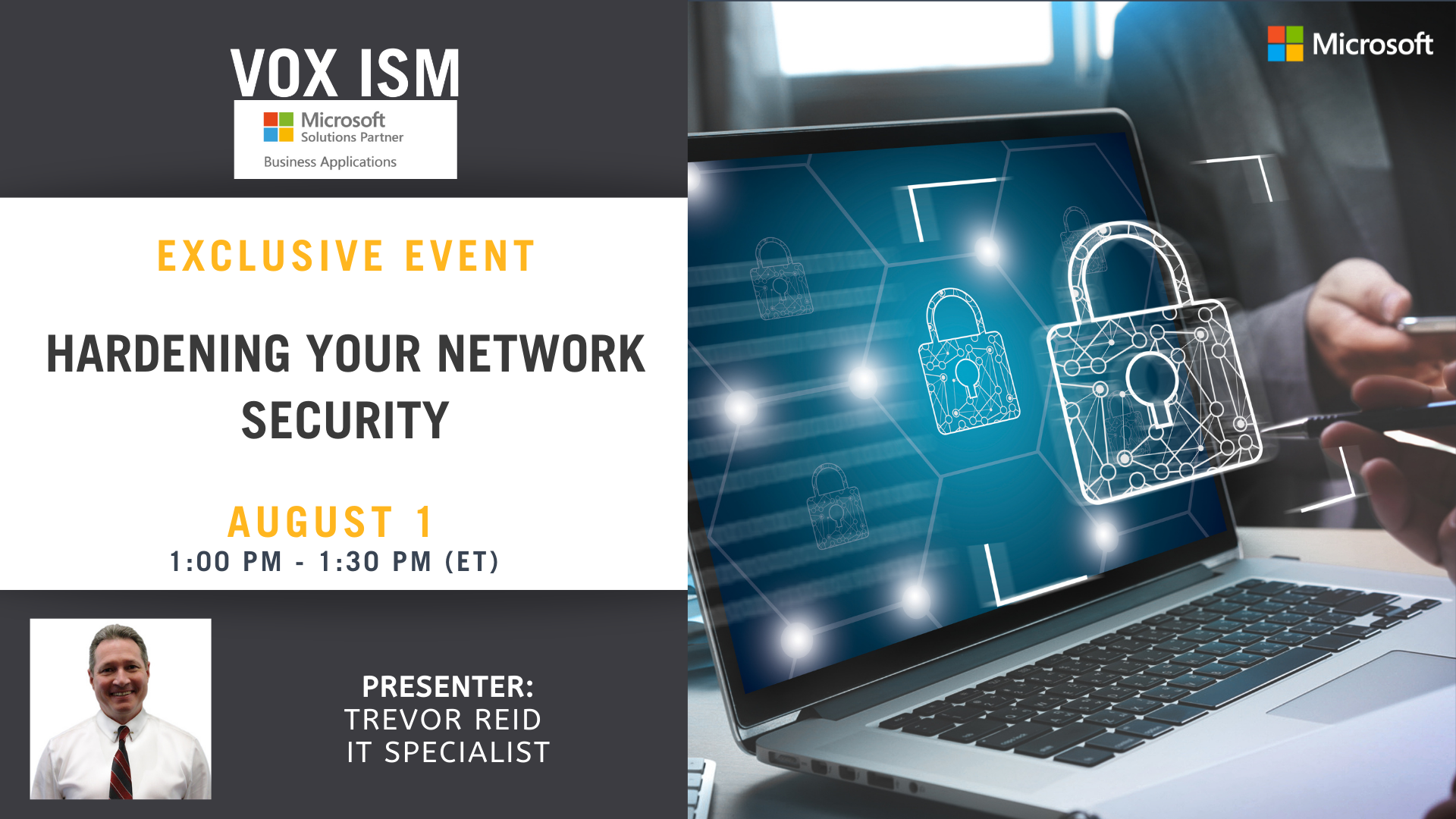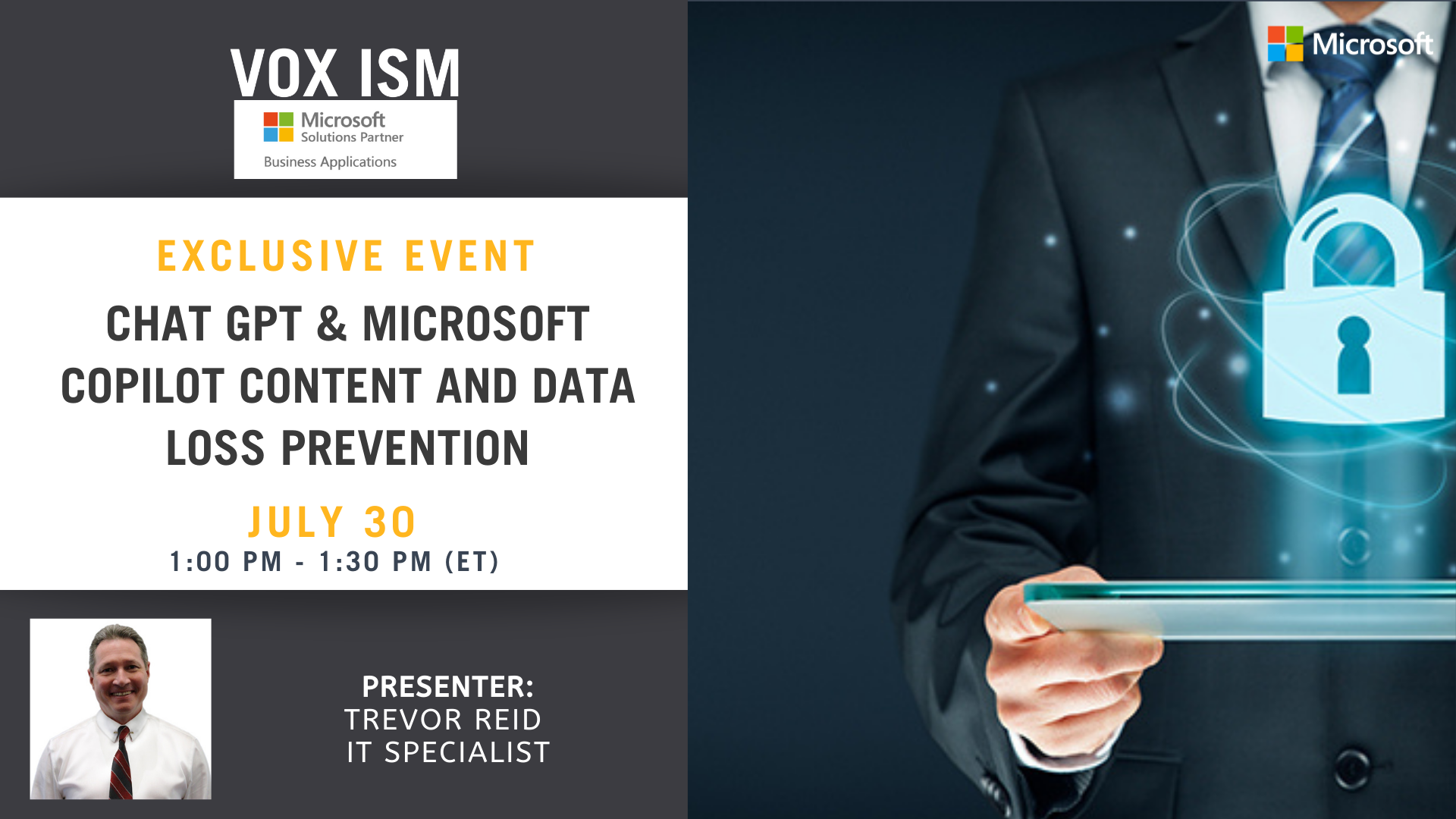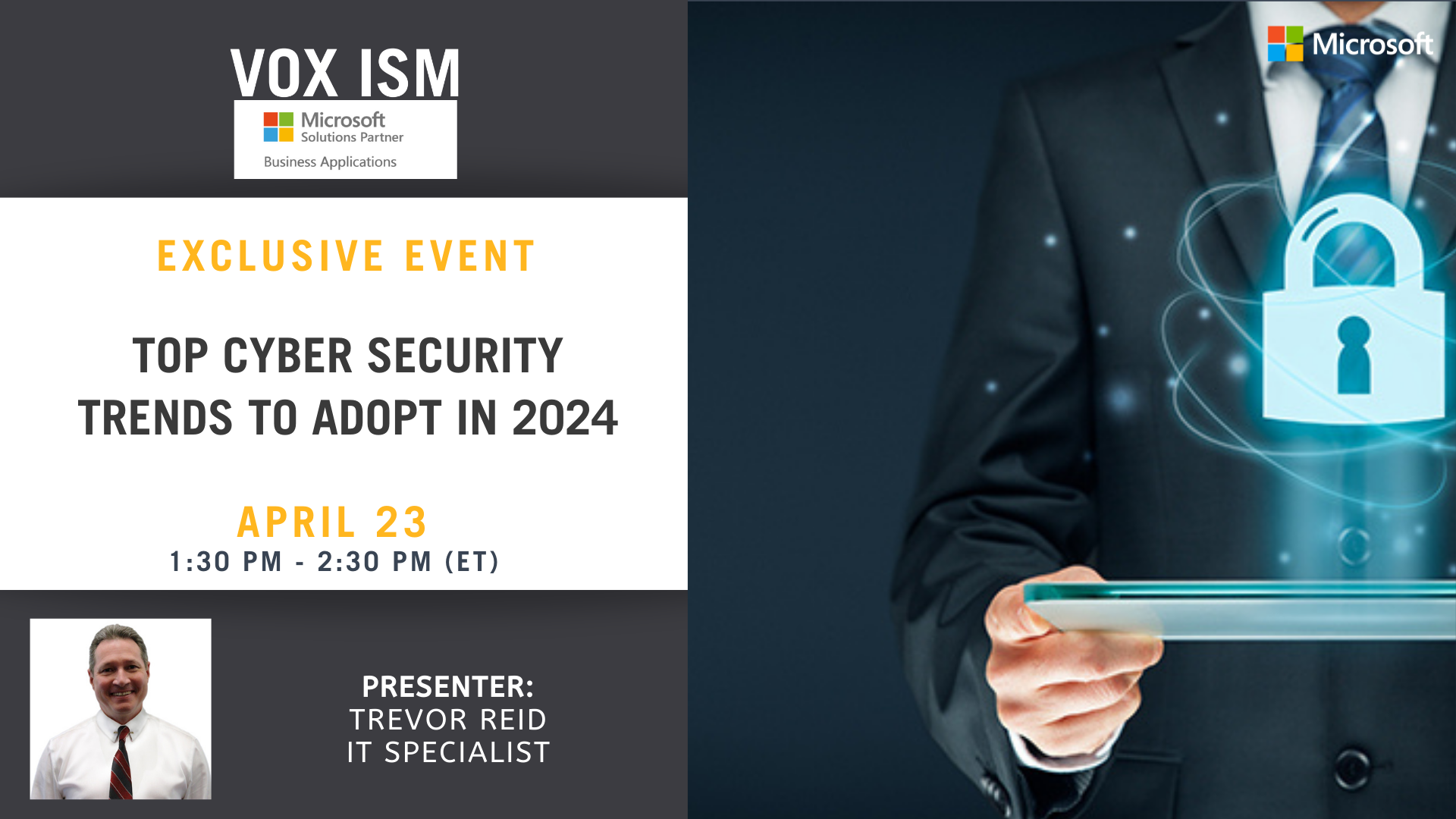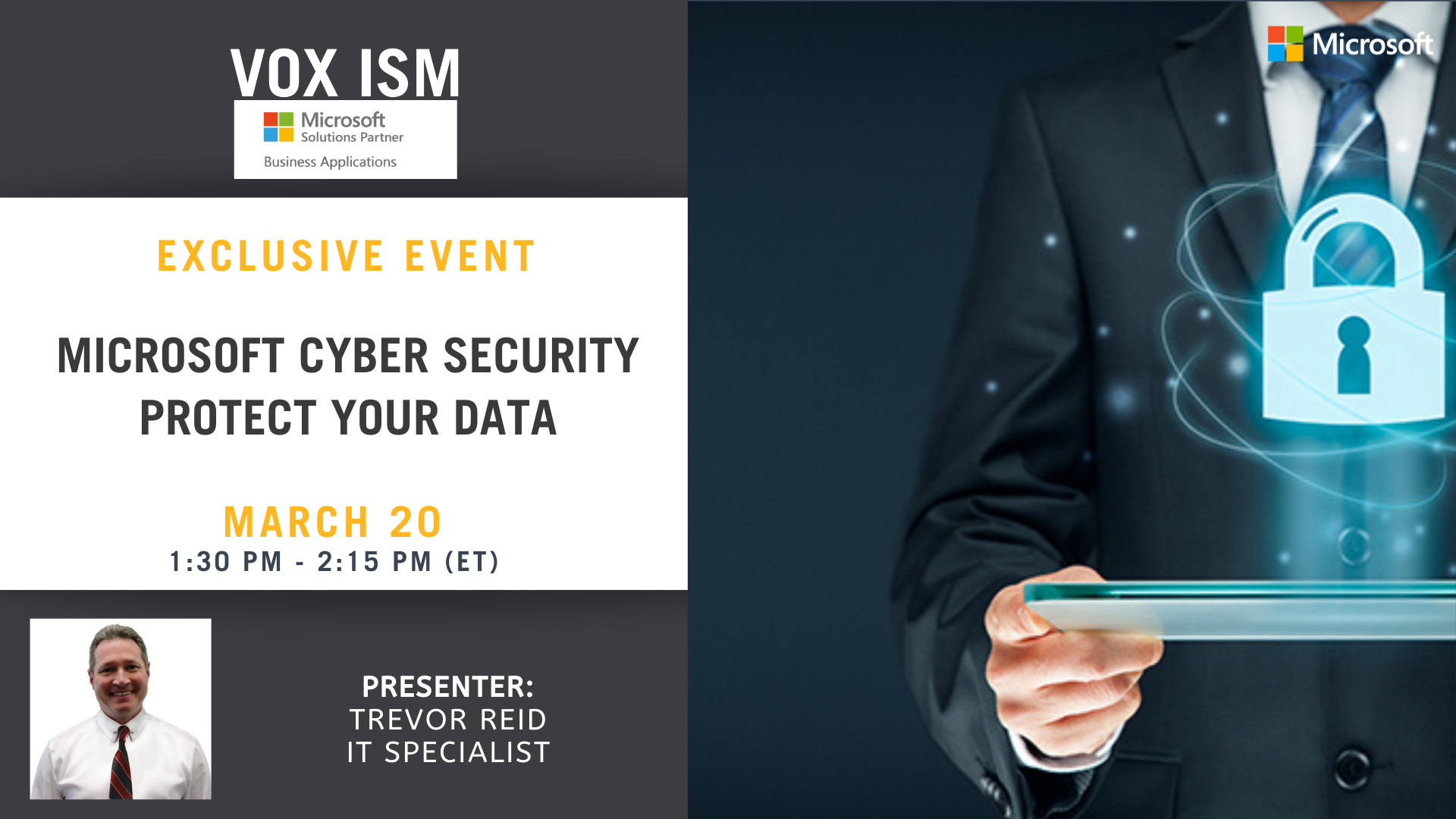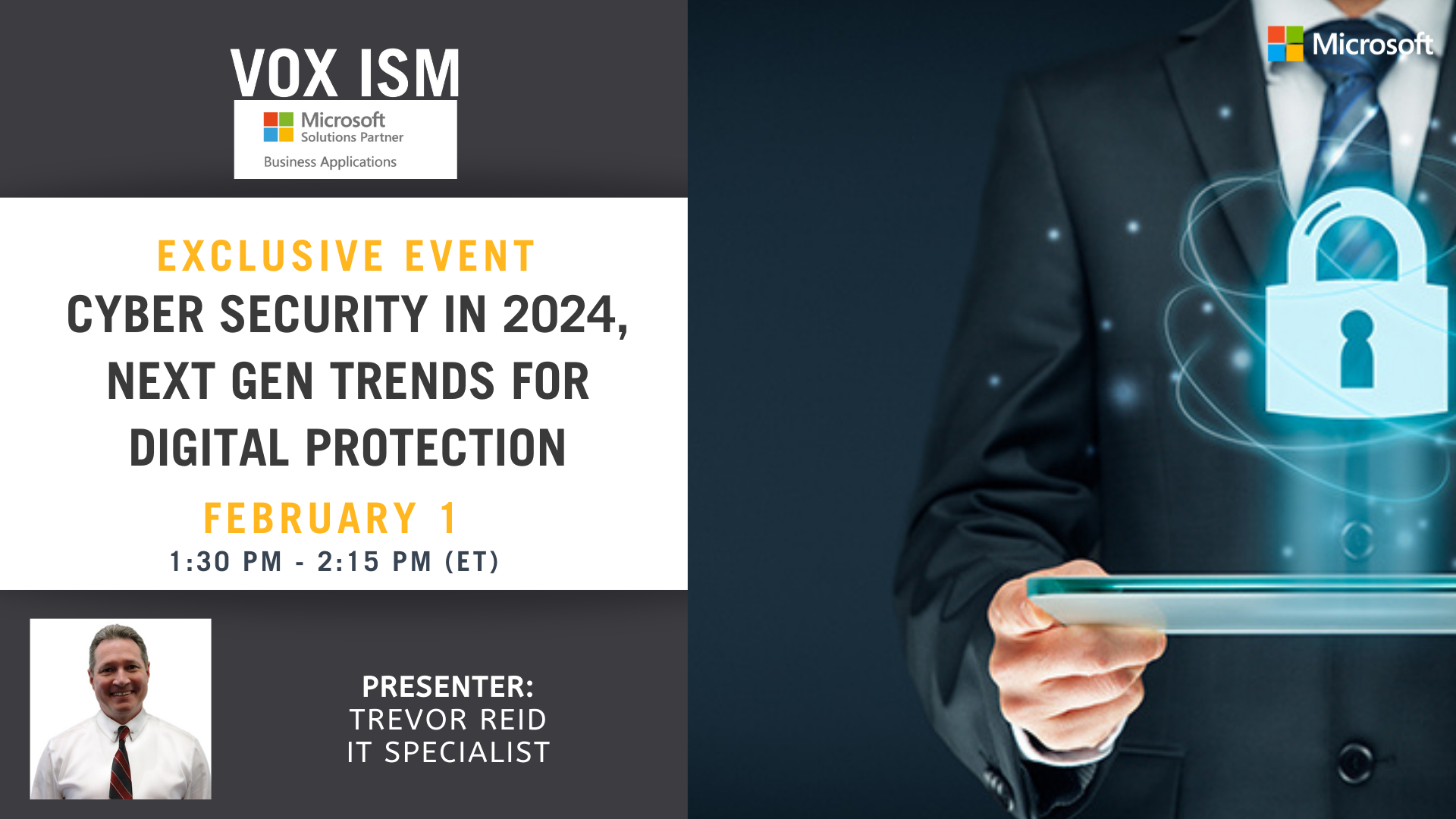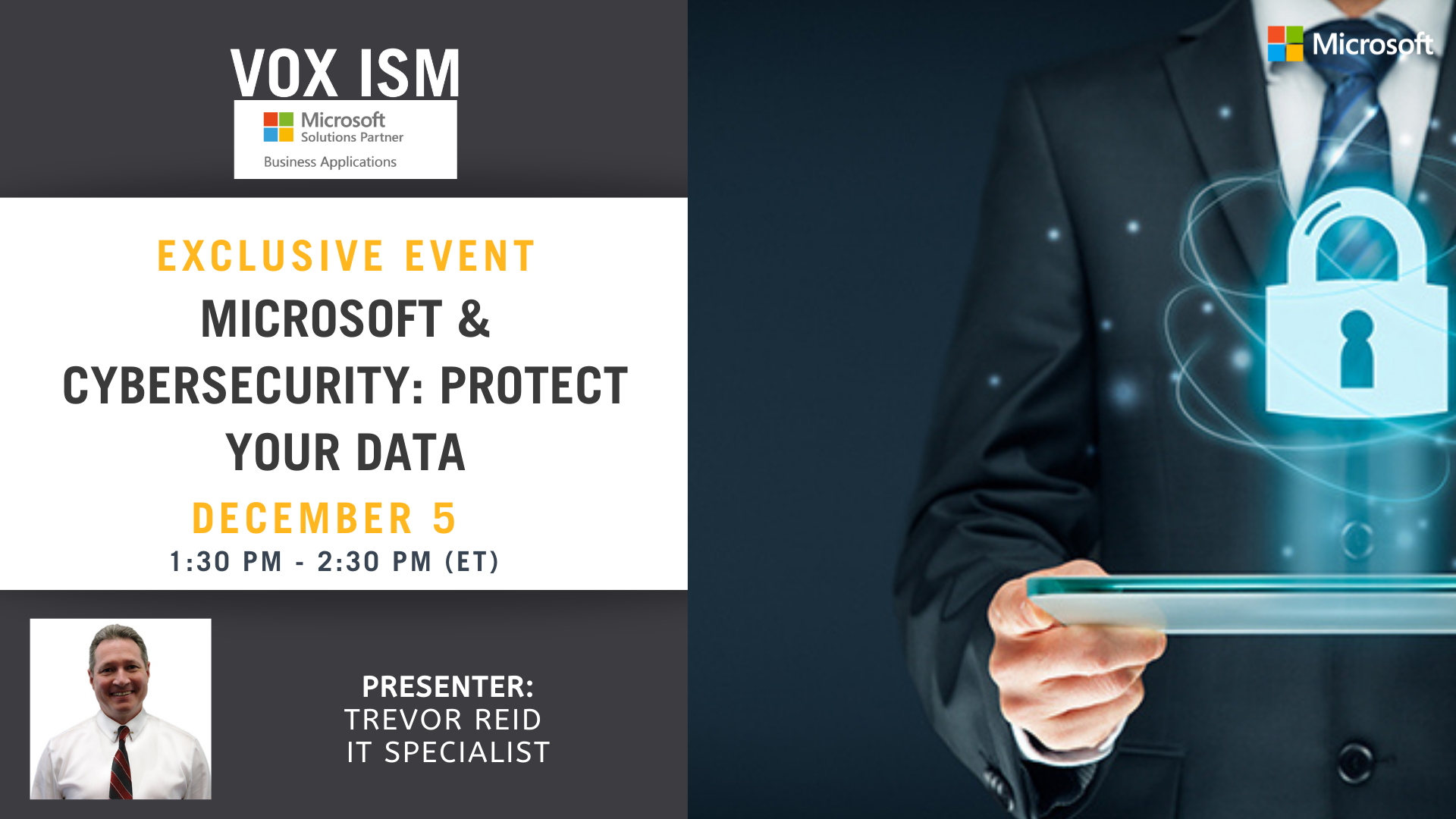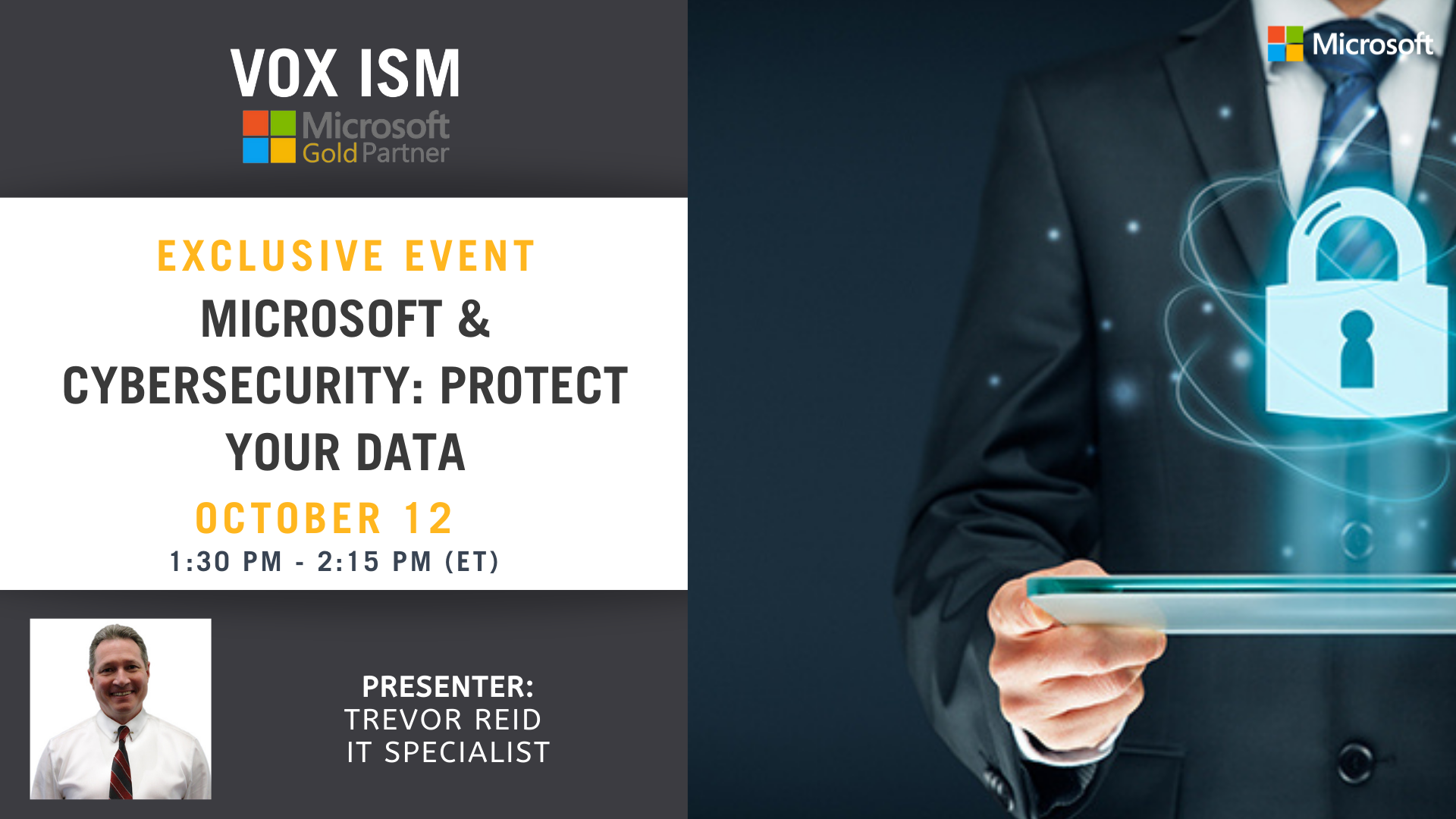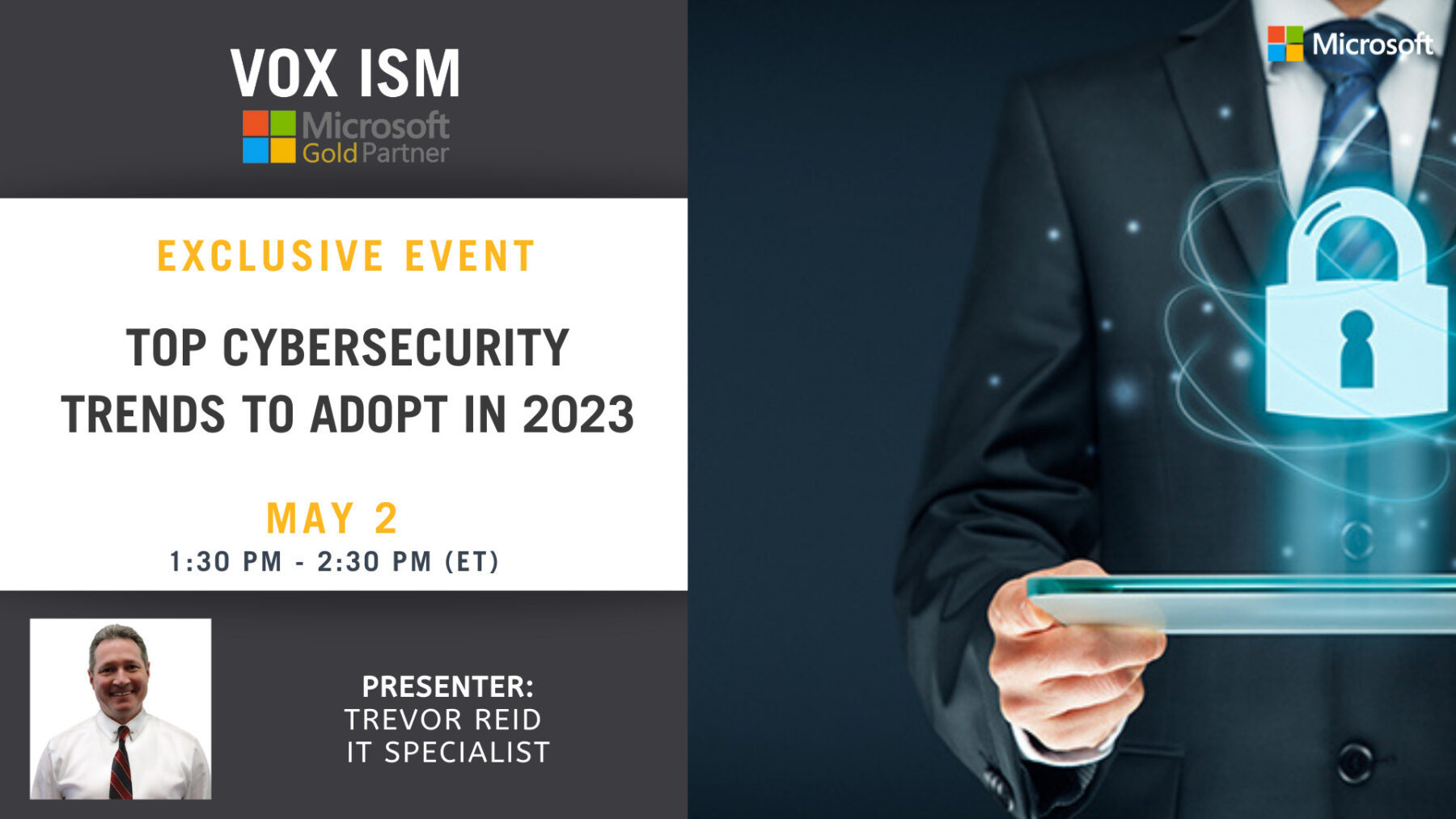Hardening your Network Security
Understanding AI (Copilot/ChatGPT) and Security
Microsoft’s Role in Cyber Security
Using Built-in Microsoft Security Tools you already have
Zero-Trust Protocols
Enhancing your End-Point Protection Controls
Organizational Awareness and Disaster Recovery Planning
Stepping up your Security – Data Loss Prevention for the AI Generation
- Microsoft Purview Data Loss Prevention
- Microsoft Data Labelling
- Microsoft Entra ID Identity Governance
Back up Considerations – Crucial for On-Premise Systems
ChatGPT & Microsoft Copilot Content and Data Loss Prevention
What is ChatGPT\Copilot?
How Microsoft 365 Copilot and ChatGPT Work
ChatGPT v. Microsoft 365 Copilot and & Copilot in Browser & Windows11
Microsoft 365 Copilot Content & Data Loss Prevention
Tips to get Microsoft 365 Copilot running Securely in your Organization
Steppingup Security: Content and Data Loss Prevention for the “AI Generation”
Getting Started with Microsoft 365 Copilot
Top Cyber Security Trends to adopt in 2024
- AI and its Role in Cyber-Security and Cyber-Crime
Top Cyber-Security Trends in 2024
- The Importance of Cybersecurity Awareness
Microsoft’s Role in Cyber-Security
- Overview of some of Microsoft’s Security products and features
Training & Education – Fostering a Cybersecurity-Aware Organizational Culture
- Multi-factor Authentication (2FA)
- Adopting “Zero-Trust” Policy
- Using the Security Tools You May Already Have
- Microsoft Compliance & Security Centers
Conditional Access Policies
Moving to Cloud-Based Systems
- Benefits/Considerations
Organizational Awareness and Disaster Recovery Planning
- Disaster Recovery Planning
- Employee Exit Protocols
- Backup Considerations
Device Management
- Endpoint Protection for Devices (Bit Defender, etc.)
- Office Protect for Enhanced Monitoring
- Microsoft Intune
Microsoft Cyber Security Protect your Data
| 1. | AI is the #1 topic in the Fall 2023
– ChatGPT, Co-Pilot, MS Fabric – AI and its Role in Cyber-Security and Cyber-Crime |
| 2. | Cyber-Security Events & Changes in Fall 2023: The Importance of Cybersecurity
|
| 3. | Microsoft’s Role in Cyber-Security
– Overview of some of Microsoft’s Security products and features – Conditional Access Policies – Compliance Portal – Data Loss Prevention |
| 4. | Core Microsoft Technologies for Security
– Admin centers for each of the key tools (Outlook, Teams, SharePoint, etc. ) – Microsoft Security Score |
| 5. | Best Practices for Data Protection with Microsoft Tools
– Training & Education – Fostering a cyber-security-aware organizational culture – Multi-Factor Authentication -Adopting “Zero-Trust” Policy
|
| 6. | Organizational Awareness and Disaster Recovery Planning
|
| 7. | Data Backup Considerations
|
| 8. | End Point Protection |
| 9. | Final Comments + Q&A |
Cyber Security in 2024, Next Gen Trends for Digital Protection
| AI is here and it’s growing! ChatGPT, Co-Pilot & MS Fabric
-AI and its Role in Cyber-Security and Cyber-Crime |
| Top Cyber-Security Trends in 2024
– The Importance of Cybersecurity Awareness |
| Microsoft’s Role in Cyber-Security
– Overview of some of Microsoft’s Security products and features |
| Training & Education – Fostering a cybersecurity-aware organizational culture |
| Multi-factor Authentication (2fa) |
| Adopting “Zero-Trust” Policy |
| Using the Security Tools, you may already have
-Microsoft Compliance & Security Centers -Conditional Access Policies |
| Moving to Cloud-based systems
– Benefits\Considerations |
| Organizational Awareness and Disaster Recovery Planning
-Disaster Recovery Planning -Employee Exit protocols -Backup considerations |
| Device Management
– End-point Protection for devices (Bit Defender, etc.) – Office Protect for enhanced monitoring – Microsoft Intune |
| Final Comments + Q&A |
Microsoft & Cybersecurity: Protect your Data
| 1. | AI is the #1 topic in the Fall 2023
– ChatGPT, Co-Pilot, MS Fabric – AI and its Role in Cyber-Security and Cyber-Crime |
| 2. | Cyber-Security Events & Changes in Fall 2023: The Importance of Cybersecurity
|
| 3. | Microsoft’s Role in Cyber-Security
– Overview of some of Microsoft’s Security products and features – Conditional Access Policies – Compliance Portal – Data Loss Prevention |
| 4. | Core Microsoft Technologies for Security
– Admin centers for each of the key tools (Outlook, Teams, SharePoint, etc. ) – Microsoft Security Score |
| 5. | Best Practices for Data Protection with Microsoft Tools
– Training & Education – Fostering a cyber-security-aware organizational culture – Multi-Factor Authentication -Adopting “Zero-Trust” Policy
|
| 6. | Organizational Awareness and Disaster Recovery Planning
|
| 7. | Data Backup Considerations
|
| 8. | End Point Protection |
| 9. | Final Comments + Q&A |
Microsoft & Cybersecurity: Protect your Data
The Importance of Cybersecurity in the Digital Age
- Statistics and real-world incidents
- Why every organization needs to prioritize cybersecurity
Microsoft’s Role in Cybersecurity
- Overview of Microsoft’s security products and features
- Case studies of Microsoft’s security solutions in action
Core Microsoft Technologies for Data Protection
- Microsoft 365 security features
- Azure security offerings
- Windows security essentials
Best Practices for Data Protection with Microsoft Tools
- Configuration tips
- Recommended policies and practices
- Layering security measures
Data Loss Protection
- Welcome and Introduction: The Crucial Need for Data Loss Protection
- Understanding Data Loss: Common Causes and Effects
- In-Depth Analysis: The Mechanics of Data Loss Protection
- The Role of Encryption in Data Loss Protection
- Data Loss Prevention: Building a Robust Strategy
- User Training: A Key Component in Minimizing Data Loss
- Introduction to Top Data Loss Protection Tools and Services
- How to Implement a Data Loss Protection Plan: A Step-by-Step Guide
- Case Studies: Data Loss Protection Success Stories
- Q&A: Discussing Your Concerns about Data Loss Protection
- Closing Remarks: Making Data Loss Protection an Integral Part of Your Security Strategy
Cybersecurity in 2023: Next-Gen Trends for Digital Protection
Top Cybersecurity Trends to Adopt in 2023
• What does the future hold?
• The Dark Web – What you should know about what’s really out there
Overview of Microsoft Security and Compliance
• Understand and identify the possible threats
• The “Dark Web” – what you should know about what’s really out there
Security Awareness Training
• Using the Tools you May Already have (Anti-PhishingSpam2fa in O365)
• Creating an Acceptable Use Policy for the staf
• Providing Strong Password Training
• Teach Employees to Identify Threats and Report Problems
• Use Proper Device Management
• Remote Access and Wi-Fi Best Practices
• Organizational Security Awareness and Preparedness (DRPs, exit protocols)
Top Cybersecurity Trends to Adopt in 2023
Stay Ahead of the Curve and Secure Your Digital Assets
Agenda:
- Introduction
- Welcome and introduction of speakers
- Brief overview of the webinar’s focus and importance of staying up-to-date with cybersecurity trends
- The Evolving Cyber Threat Landscape
- Discussion of recent high-profile cyber-attacks and their impacts
- Emerging cyber threats and the importance of continuous adaptation
- Zero Trust Architecture: A Must-Have for Modern Security (10 minutes)
- Introduction to Zero Trust and its principles
- How to implement Zero Trust in your organization effectively
- The Rise of AI and ML in Cybersecurity
- How artificial intelligence and machine learning are revolutionizing cybersecurity
- Real-world examples of AI/ML-powered security solutions
- Remote Work Security: Safeguarding the Distributed Workforce
- Challenges and risks associated with remote work
- Best practices for securing remote access and ensuring data protection
- The Growing Importance of Privacy-Enhancing Technologies
- Overview of privacy-enhancing technologies (PETs) and their benefits
- How to integrate PETs into your cybersecurity strategy
- Integrating Cybersecurity into Organizational Culture
- Tips for creating a security-aware workforce
- Strategies for fostering a culture of cybersecurity resilience
- Q&A and Closing Remarks
- Attendees can ask questions and engage with the speakers
- Final thoughts and a reminder of the importance of staying informed about cybersecurity trends
Join us for this informative and engaging webinar to discover the top cybersecurity trends to adopt in 2023. Stay ahead of the curve and ensure your digital assets are secure in an ever-evolving threat landscape. Register today!

